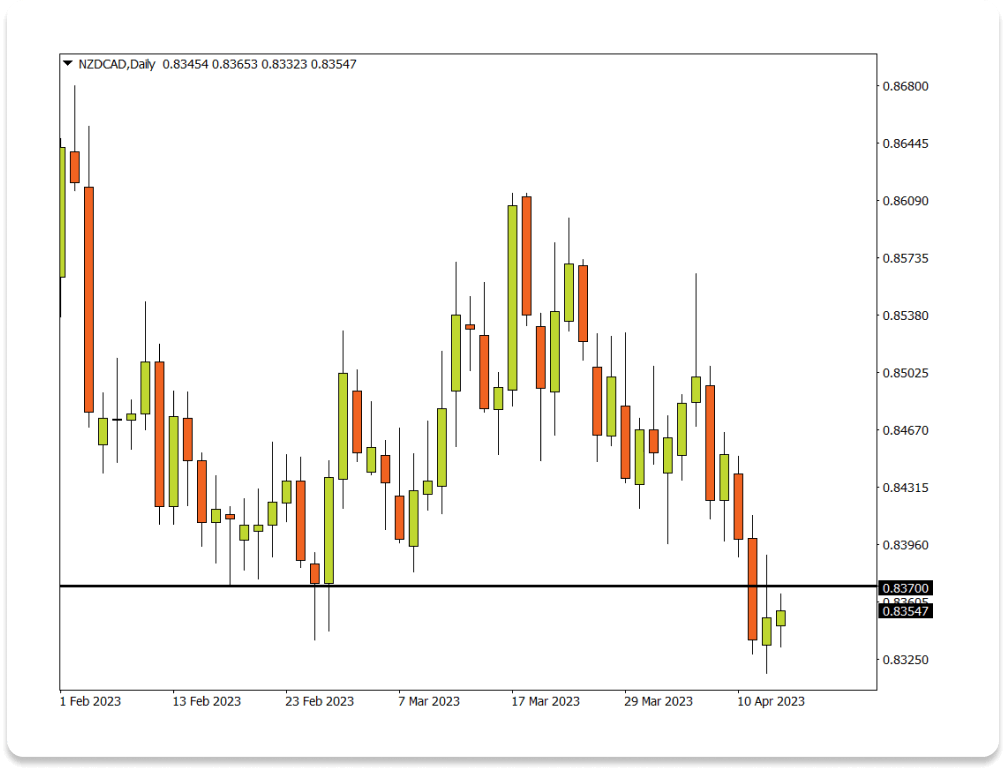
GUIDE | TRADING BASICS | BEGINNER
Oil commodity trading: How to trade oil
Learn the basics of oil trading, including what impacts oil prices, popular strategies and the different ways you can trade it.
Crude oil is one of the most actively traded commodities in the world. Used to power vehicles, generate electricity and manufacture everyday products, oil is a central cog in the global economy and consistently in high demand.
This has earned it the nickname of “black gold”. Read on to find out all you need to know about oil trading, including what currency it’s traded in, different trading strategies, and how to trade oil with FXTM.
Jump to your chapter of interest
What is oil trading?
Put simply, oil trading is the buying and selling of oil with the aim of making a profit. If you had the resources (and storage facilities), you could do this by buying the physical commodity. But the most common way to trade oil is to speculate on its price using derivatives.
A derivative is a financial contract between two parties that ‘derives’ its value from the price of an underlying asset, like oil. When you trade a derivative, you can profit from changes in oil’s price, without having to take ownership of actual barrels of oil.
Hundreds of different types of crude oil are traded on global markets, but only two serve as worldwide benchmarks for oil prices: Brent and West Texas Intermediate (WTI).
Brent Oil
This comes from oil fields in the North Sea. Up to two-thirds of global oil trades are on Brent. On the FXTM platform, you’ll see it listed as UK Brent oil.
WTI Crude Oil
As the name suggests, this comes from US oil fields, primarily in Texas, Louisiana and North Dakota. WTI is the main benchmark for oil consumed in the US. On the FXTM platform, you’ll see it listed as US Crude oil.
Why is oil trading popular?
Crude oil is an extremely valuable resource within the commodities market. It’s the world’s primary energy source, refined to make products like gasoline, diesel and other chemicals.
As oil is finite, it can see massive price swings as supply and demand fluctuates. This volatility makes oil extremely popular for traders, offering up the possibility of large gains – although there’s always the risk of loss, too.
Learn more about other popular commodities in our guide to commodities trading.
What is the oil spot price?
Oil spot prices represent the cost of buying or selling oil at the current market level, or ‘on the spot’. They reflect how much oil is worth right now, as opposed to futures prices which indicate how much the markets believe oil will be worth at a set date in future.
What impacts the price of oil?
Like almost all financial markets, the price of oil is primarily moved by the relationship between supply and demand. If demand for oil exceeds its supply, the price of oil will rise. But if demand falls and supply overwhelms the market, the price of oil will fall.
Generally, oil has a low elasticity of demand. This means that demand remains consistently high even when oil prices rise, given the global economy’s dependence on it.
The supply of oil is also considered inelastic, given how complex and costly it is to set up the oil extraction process. This is why you’ll see wild swings in the price of oil, which often impact the wider market.
There are a huge number of factors that can impact oil supply and demand, including:
- Natural disasters
- War or civil unrest
- Seasonal changes
- Population growth
- Global economic performance
- Shipping availability and freight rates
- Storage availability
- Demand for renewable energy
Become a better trader
Whether you’re new to trading or have years of experience, level up your skills with our free educational resources.
Popular oil trading strategies
Of course, before you start trading oil, you’ll want to make sure you have a clear trade strategy to help support your decisions.
Here are a few of the more common ways of trading oil as a commodity.
Day Trading
Day trading is a popular way to speculate on the price of oil due to the high volatility of the market. Day traders try to make small profits on lots of trades throughout the day, meaning they look for multiple opportunities in the space of a single trading session.
Day trading is generally better suited to people who’ve got plenty of time to commit. They’ll need to keep their finger on the pulse of the market and pay close attention to anything that could affect the price of oil.


Range trading
Range trading is a good strategy for oil, as it works best in volatile markets where there isn’t a particular long-term trend in either direction.
Breakout trading
Breakout trading is where a trader tries to enter a position as soon as prices break out of its current range. This based on the notion that a breakout could indicate that the price of the asset will start moving in the direction of the breakout.
Breakout traders can apply the same logic if they want to go short. They just enter a position after the price of an asset ‘breaks’ below a historical level of support. This means a breakout strategy can be used in both rising and falling markets – making it a popular choice for volatile markets like oil.
Put knowledge into action
Now you know how oil trading works, put your new knowledge to the test.
Practise trading on our risk-free demo or tackle the markets for real with a live account.



